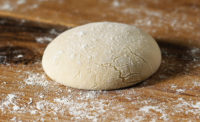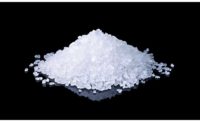One of the initial steps in the bread baking process, mixing, is hugely responsible for the quality of your final product. Even if the mixing is done well, a product’s quality will be compromised if the incorrect mixing method is used instead of the one that works best for the ingredient selection and genre of bread.
The three common yeast bread mixing methods are the short, improved and intensive styles. In addition to crumb structure, mixing methods greatly affect dough strength and required fermentation time. As mixing time and intensity increase, more strength is imparted to a dough, until the mixing tolerance is exceeded and the dough starts to break down. Because dough development is increased as dough ferments, the more dough is mixed, the less fermentation it may require.
Although this latter point may sound like a time saver, excessive mixing should be avoided. Artisan bread tends to limit mixing in favor of dough development through fermentation, because extensive mixing incorporates too much oxygen into the dough. This oxidation destroys carotenoid pigments responsible for flavor complexity and superlative crumb color and produces bread with a very white crumb and bread that goes stale quickly.
Before industrialization, bread dough was mixed by hand. The short mix is gentle and produces dough that requires more development through fermentation and folding. By extending the length of the first fermentation, the strength of the dough can be increased. The short mix replicates hand mixing, so mix time is limited and fermentation is extended. Of course, kneading in a mixer isn’t just about the amount of time in the bowl; it is also about revolutions per minute of the hook and the speed with which it makes those revolutions. Therefore, only the slowest speed is used when executing a short mix in a mixer, whether it is a planetary or spiral machine.
The improved mix is the most-common mixing method for well-made lean-dough hearth bread. A typical mix cycle on a 20-quart planetary mixer is three minutes on first speed and two to three minutes on second speed. The dough will be smooth, slightly tacky and slightly shiny. Since more strength is put into the dough through mixing, fermentation time can be shortened compared to a short-mix dough. An improved mix is very typical for poolish baguettes and other lean doughs.
The intensive mix didn’t come into existence until the advent of mechanical mixers and their widespread use. Bakers soon learned that more mixing created dough that was strong enough to compensate for reduced fermentation times. Mechanized mixers also allowed for greater production with less labor. Although productivity increased, bread quality in lean doughs declined sharply.
However, enriched dough, such as brioche and challah, require an intensive mix. A strong gluten matrix is necessary to carry the extra load of the gluten shortening fat molecules in the butter, oil or eggs. A stollen dough that is undermixed will be flat and crumbly compared to one that has been correctly mixed. In a planetary mixer, that ends up to be about three minutes on first speed, three minutes on second speed and then about another 16–18 minutes on second speed while plasticized fat is added in small amounts.
The objective of proper mixing is to develop the gluten adequately so the dough can retain carbon dioxide and bake into the desired crumb structure. Large or sharp ingredients, such as nuts, whole-grain soakers, olives or dried fruit, can damage gluten by severing gluten strands. To avoid this damage, add these ingredients at the end of the mix after gluten has developed and mix on the slowest possible speed until just (but evenly) incorporated.
When properly executed, dough comes to life during the mixing process.






